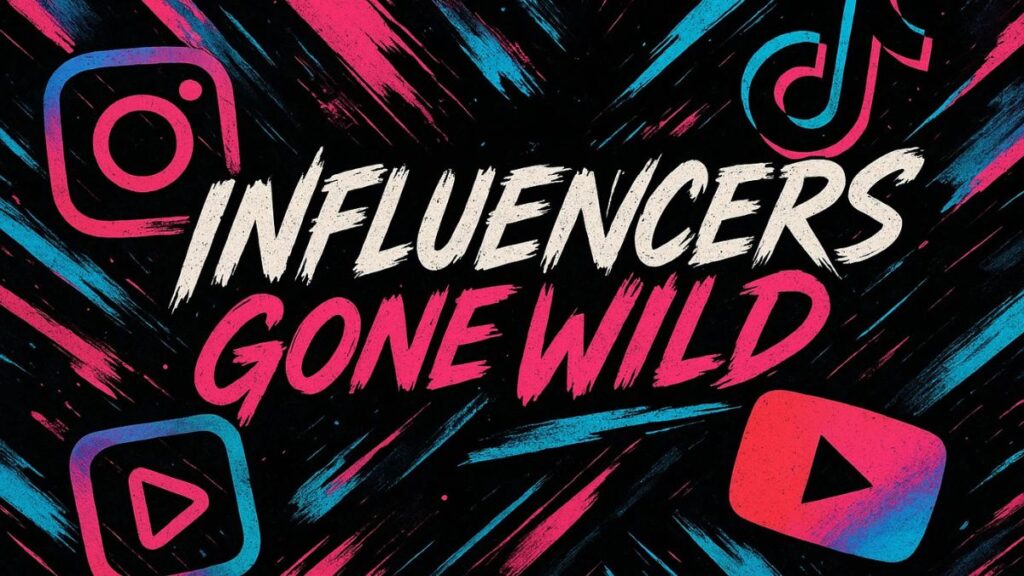The influencer landscape is evolving rapidly, and brands can no longer afford to ignore this dynamic shift. Enter “influencersginewuld,” a term that encapsulates the new wave of influencers who are changing the marketing game. With every scroll through social media, we witness individuals transforming into powerful brand ambassadors overnight. But what does it really mean for companies trying to establish their presence in an increasingly crowded marketplace? Understanding this trend is essential for brands eager to connect with consumers on a deeper level.
As traditional advertising methods take a backseat, the power of influencers has surged like never before. They offer authenticity and relatability that resonates particularly well with today’s audience. This post will explore everything you need to know about leveraging these modern-day storytellers effectively—whether you’re looking to boost your brand’s visibility or create genuine connections with potential customers. Let’s dive into what makes influencersginewuld not just a buzzword but a pivotal element in today’s digital marketing strategy!
Understanding the Influencer Industry
The influencer industry has transformed from a niche market into a robust ecosystem. Once dominated by celebrities, it now includes everyday people who have amassed dedicated followings online. Their ability to connect authentically with audiences makes them invaluable.
At its core, the influencer landscape thrives on trust and engagement. Followers look to these individuals for recommendations and insights, often valuing their opinions over traditional advertising methods. This shift has encouraged brands to rethink their marketing strategies.
Micro-influencers are gaining traction as well. With smaller yet highly engaged audiences, they can offer more targeted approaches that resonate deeply with specific demographics. Understanding this diversity is crucial for brands aiming to tap into various niches effectively.
As digital platforms evolve, so do the opportunities within the influencer space. Brands must stay informed about trends and shifts in consumer behavior to navigate this landscape successfully.
The Power of Social Media in Influencer Marketing
Social media has transformed the landscape of influencer marketing. Platforms like Instagram, TikTok, and YouTube have become essential playgrounds for brands seeking authentic connections with their audiences.
These channels allow influencers to showcase products in relatable ways, creating a bridge between consumers and brands. Captivating visuals paired with engaging storytelling amplify brand messages beyond traditional advertising.
The ability to reach niche markets is another advantage. Influencers often cater to specific interests or demographics, making it easier for brands to target their campaigns effectively.
Moreover, social media fosters real-time interaction. Brands can gauge audience reactions instantly through comments and shares, helping refine strategies on the fly.
This dynamic environment keeps both influencers and brands on their toes, pushing them toward creativity that resonates deeply with followers. Social media is not just an avenue; it’s the heartbeat of modern influencer marketing strategies.
Different Types of Influencers and Their Impact on Brands
Influencers come in various shapes and sizes, each bringing unique value to brands. Micro-influencers, often with followers ranging from 1,000 to 100,000, tend to foster close-knit communities. Their engagement rates are typically higher than those of larger influencers.
On the other hand, macro-influencers boast a following that can exceed a million. They offer massive reach but may lack the same personal connection as their micro counterparts. Brands must weigh visibility against authenticity when choosing whom to partner with.
There are also niche influencers who specialize in specific industries or interests. Their targeted audiences create opportunities for hyper-focused campaigns that resonate deeply with potential customers.
Celebrity influencers attract attention through fame rather than expertise or relatability. While they can generate buzz quickly, the cost is often steep—and brand alignment becomes crucial for success. Each type plays a distinct role in shaping how consumers perceive products and services.
How to Partner with Influencers Effectively
Partnering with influencers effectively involves clear communication from the start. Brands should outline expectations, goals, and deliverables to create a strong foundation for collaboration.
Choosing the right influencer is crucial. Look beyond follower count; assess their engagement rates and authenticity. A smaller but dedicated audience can often yield better results than one that’s just large.
Establish a creative brief that allows influencers room for creativity while aligning with your brand message. Trust their instincts as they know their audience best.
Maintain an ongoing relationship even after campaigns end. Building long-term partnerships fosters loyalty and can lead to more authentic promotion in future endeavors.
Be open to feedback throughout the process. Influencers often have valuable insights into what resonates with their followers, which can enhance campaign effectiveness significantly.
Measuring Success in Influencer Marketing
Measuring success in influencer marketing can be a complex task. Brands often grapple with various metrics that reflect their campaign’s effectiveness.
Engagement rates are critical indicators. Likes, shares, and comments reveal how audiences interact with content. Higher engagement suggests the influencer resonates well with their followers.
Another key metric is reach. This measures how many people see the posts or stories featuring your brand. A broader reach typically means more exposure for your products or services.
Conversions also play a pivotal role. Tracking sales generated from influencer campaigns helps brands understand return on investment (ROI). Unique discount codes and affiliate links can simplify this process.
Moreover, sentiment analysis offers insights into audience perception. Positive feedback indicates successful messaging while negative responses may highlight areas needing improvement.
Combining these metrics provides a comprehensive view of an influencer partnership’s impact on brand growth and consumer behavior.
Potential Risks and Challenges for Brands
Brands venturing into the influencersginewuld landscape should tread carefully. One significant risk lies in misalignment. If a brand partners with an influencer whose values don’t match, it can backfire spectacularly.
Another challenge is authenticity. The audience easily perceives insincerity. Brands must ensure that their collaborations feel genuine to maintain trust.
Additionally, there’s the issue of measurement. Determining ROI can be tricky when engagement rates fluctuate and conversions aren’t always clear-cut.
Reputation management also comes into play. An influencer’s past controversies or sudden changes in behavior can reflect poorly on associated brands.
Staying compliant with regulations like disclosure requirements is crucial but often overlooked. Failing to adhere could lead to legal ramifications and tarnish brand credibility in the eyes of consumers.
Conclusion: The Future of Influencer Marketing
The landscape of influencer marketing is evolving rapidly. As brands continue to explore the potential of influencersginewuld, understanding the nuances becomes crucial. The rise of micro and nano-influencers has changed how businesses approach partnerships. These smaller influencers often boast higher engagement rates and authenticity.
As new platforms emerge, so do innovative ways to connect with audiences. Brands must stay ahead by experimenting with different types of content and collaboration strategies. Authenticity will remain key in building trust between consumers and brands.
Looking forward, we can expect more regulations around influencer marketing as transparency becomes a priority for both followers and marketers alike. Staying informed about these changes will be essential for successful campaigns.
With technology continuing to advance, tools for measuring impact are becoming more sophisticated too. This means that brands can track their ROI better than ever before while refining their approaches based on data-driven insights.
Navigating this dynamic environment requires flexibility and creativity from marketers aiming to leverage the power of influencersginewuld effectively today and tomorrow. Embracing change while focusing on authentic connections will define success in this burgeoning industry moving forward.







